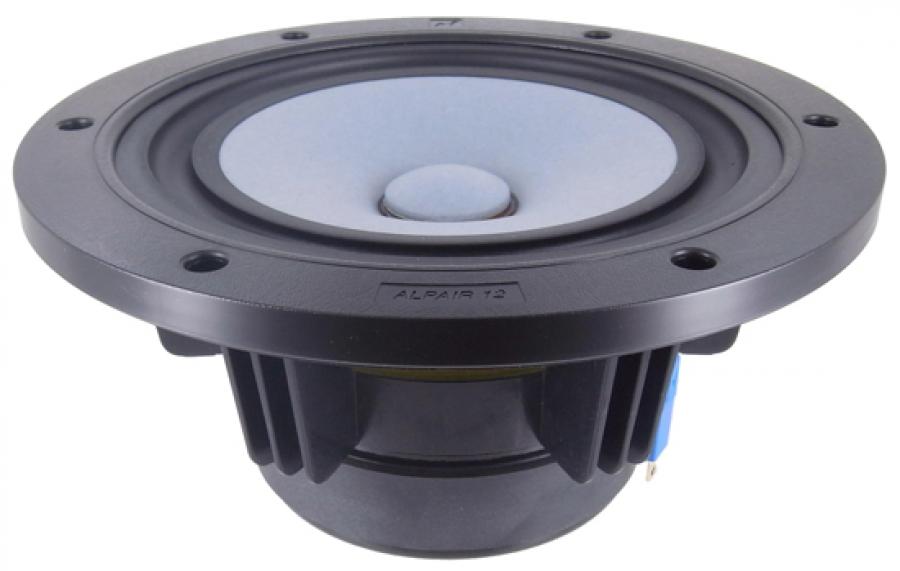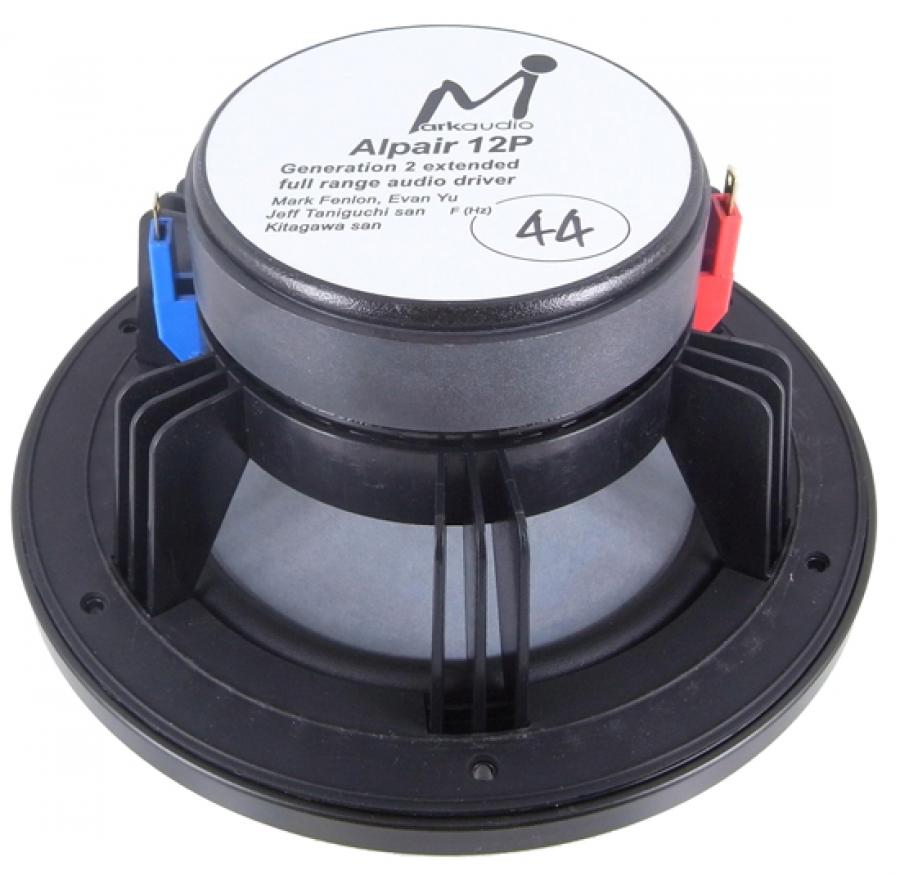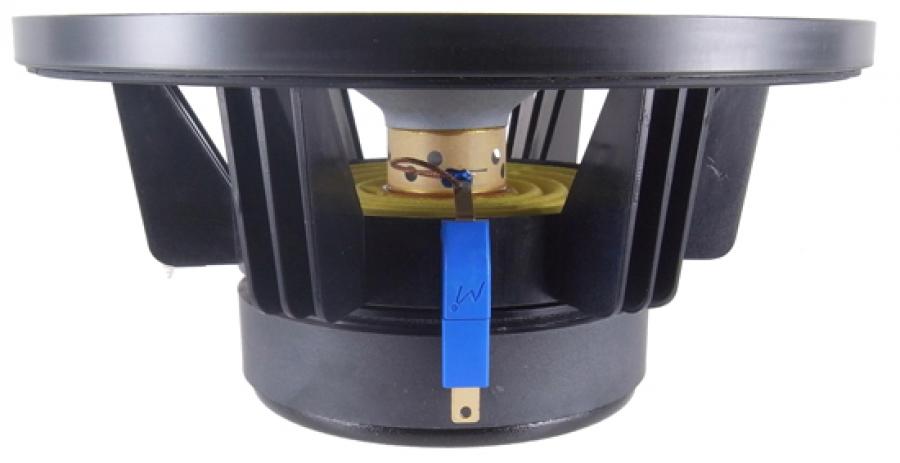Operation Manual
Introduction
The Acoustico speaker was designed as a broad directivity pattern, non-powered sound radiator based on a full-range single driver. The speaker produces absolute detail, dynamics, and clarity, rendering the most realistic musical image. The speaker delivers an optimum audio performance when deployed with the Acoustico speaker cable and tube power audio amplifier. Due to the broad directivity pattern, the speaker is best suited for home stereo systems. The speaker is manufactured at the Acoustico facility in Central Illinois, USA. Below are the pictures of the speaker.


Features
Full-range Single Driver
Full-range single driver enables the speaker to avoid phase distortions and improves efficiency.
Ported Enclosure
A uniquely designed enclosure doesn’t require removable doors or panels for installing the driver. This design eliminates necessity for internal bracing and maximizes acoustical damping. The speaker’s ported enclosure is tuned to 56Hz.
Gold-plated Connectors
Gold-plated internal connectors and input binding posts provide trouble free connections.
Technical Description
The speaker is the result of 6 years of extensive research, design, and development. It has gone through rigorous performance and endurance testing before going into production. This has ensured high-quality and long-term operation.
The goal of this design was to avoid passive crossover networks and phase distortions at crossover frequencies that are both prevalent in multi-driver speaker configurations.
The phase distortion is caused by the distances between drivers.
The purpose of a passive crossover network is to divide the frequency inputted in a speaker. This division is necessary since the multi-driver speakers have different types of drivers for each frequency range.
The crossover network reduces speaker efficiency compared to a full-range single driver speaker. The speaker efficiency is especially important for tube power audio amplifiers. Their linearity is inversely related to power output. The lower power output required to produce an adequate sound volume for a given listening space, the less distortion a tube amplifier will introduce to input audio signal. A high efficiency speaker coupled with a high power amplifier enables this amplifier to operate in the linear part of the gain curve. The crossover network also creates an extra capacitive and inductive loading for amplifier output circuits. Tube amplifiers with output transformers are especially susceptible to this type of loading. The effect of the loading is an added distortion that can be observed by examining the shape of a 10kHz square wave output signal of the tube amplifier. Since our speaker doesn’t have a passive crossover network, it is best suited for use with tube amplifiers.
The driver is mounted flush with the front baffle to minimize spikes in the frequency response. The driver and connection cup are sealed against the enclosure to prevent air from escaping and creating distortions. The speaker design incorporates four feet resembling sharp spikes. The purpose of this type of feet is to put the speaker in direct contact with the floor. By doing so the extra vibrations of the speaker which caused distortions at the low frequencies are minimized.
The speaker uses Alpair 12P full-range driver produced by Markaudio (see pictures below). This is the purist, single cone full-range capable driver without use of phase plugs, co-axial center tweeters, or whizzer cones. The driver’s power-train (cone, cap, coil and suspensions) is mechanically efficient and linear, requiring only modest powered audio amplifiers to make it perform well. The driver uses a custom, natural blue, uncoated reinforced paper, very low profile, multiform cone which has a reduced mass and increased dispersion performance (broad directivity pattern). The driver’s voice coil has a custom, vented, low mass thin-walled body with a copper-clad aluminum wire and an aluminum/paper wrap. The driver has a front, ultra-thin wall (which doesn’t support the cone), long-stroke, hybrid, mono-suspension with an arrestor. The progressive-rate spider is particularly special. It employs a new long throw profile set together with a ribbed body to maintain linearity. Self-damping reinforced polymer basket and single ferrite magnet complete the driver design.



The height, width, and depth of the speaker enclosure (see picture below) are chosen to minimize dimensional resonances. These resonances occur when a dimension is equal to a half wavelength of the sound. They would cause coloration of the reproduced sound at the corresponding frequency. The driver is positioned off-center in the front baffle vertical plane to minimize resonances as well. The edges of the enclosure are beveled to minimize distortions. This required designing of proprietary joints for ensuring structural integrity and high acoustical damping of the enclosure. It is also constructed out of material with the high stiffness and density which provide the best acoustical damping properties. All internal faces of the enclosure are lined with a damping material for improving low frequency response. This response has also been enhanced by using the back radiation of the driver. The front and back radiation, however, are in opposite phases. In order to add them up constructively, a phase inverter has been incorporated in the speaker design. There are different phase inverting enclosures which couple low frequency front and back radiations through an acoustic phase inverting network. We use the Bass Reflex phase inverting enclosure for our speaker. The Bass Reflex enclosure is a closed box with a “port” in one of the walls. The port is a tube, open at one end to the inside volume of the enclosure and open at the other end to the listening space. Our enclosure has the port in the front baffle. In a Bass Reflex enclosure, the driver internally excites a Helmholtz resonator. This resonator is an acoustic network which has the amplitude and phase response of a second order resonant system (which gives a phase inversion above resonance). From resonant frequency upwards, the port radiation and the driver radiation are in phase (so they add constructively giving more bass). Below resonance, the port and driver radiation are out of phase (so they add destructively giving less bass than a closed box). At the resonant frequency the port response is much greater than the driver’s response (the back load presented to the driver is at its maximum at the resonance of the port).

All connectors used in the speaker are gold-plated terminals to minimize the parasitic capacitance and impedance due to corrosion.
Specification
| Maximum Input Power | 30 Wrms |
| Efficiency | 92 dB |
| Frequency the Enclosure Tuned to | 56Hz |
| High Frequency Response (-3dB) | 22kHz |
| Voice Coil Impedance | 8 ohms |
| Maximum Usable Excursion | 0.213 inch |
| Low-profile Multiform Cone for Broad Directivity Pattern | 140 degrees |
| Height | 18.375 inch |
| Width | 12 inch |
| Depth | 8 inch |
| Weight | 20 lb |
The continuous improvement of its products is the policy of Acoustico Limited Liability Company who reserve the right to improve designs without notice.
